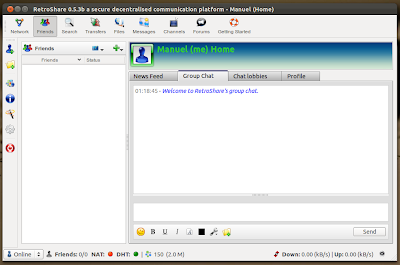

Since the file transfer uses anonymous sources, it’s not possible to perform end-to-end encryption of the traffic along a tunnel in a way that can resist a man-in-the-middle attack. when a peer in the middle disconnects).įile transfer, for instance manages multiple tunnels per hash, and asks chunks again if they cannot be obtained or got corrupted after the previous request. We made that choice for robustness reasons, since tunnels can die unpredictably (e.g. It’s the service’s responsibility to do that. The tunnelling service does not ensure the data integrity, nor its confidentiality. The figure below shows the data flow between the tunnelling service and an arbitrary client service (e.g file transfer): But now additional services may use tunnels, in particular the chat and messaging services. The main client of the tunnelling service is of course the anonymous file transfer system. That makes it possible to two distant peers sharing a service that is unknown to intermediate peers to exchange data (a plugin service for instance). tunnels can route arbitrary data, using a generic data type.the client service can send data to the virtual peer.

once tunnels are opened, the tunnelling service warns the client service that new virtual peers are “online”.services can ask to open tunnels, based on a sha1 hash.To allow services to interact with distant peers anonymously, we have extended the tunnelling service to be used by any other service in the Retroshare network. They can be used in particular for contacting peers that try to connect to you, or for establishing a secured chat between two people who otherwise meet in a chat lobby. A rule of thumb for an asymmetric DSL connexion is to have at most 30-40 online friends at a given time.įorums certainly offer a way to exchange information, but they are not private (everyone can read) and do not provide means to an interactive conversation.ĭistant chat and messages certainly fill a gap, by allowing authenticated and private messages to travel between non friends using tunnels. Another issue is that it is advised to limit the number of direct friends so that broadcasting services (such as the tunnel requesting system for file transfer) only take an acceptable part of the bandwidth. Trust issues, for a start, might prevent you from making friends with many peers. Still, the number of friends one can have in the network is limited. Chat and messages with friends are certainly useful in that matter. People keep using it because they can talk to each other, exchange data, and broadcast some useful information to others. The life of the Retroshare network is all about communication.


 0 kommentar(er)
0 kommentar(er)
